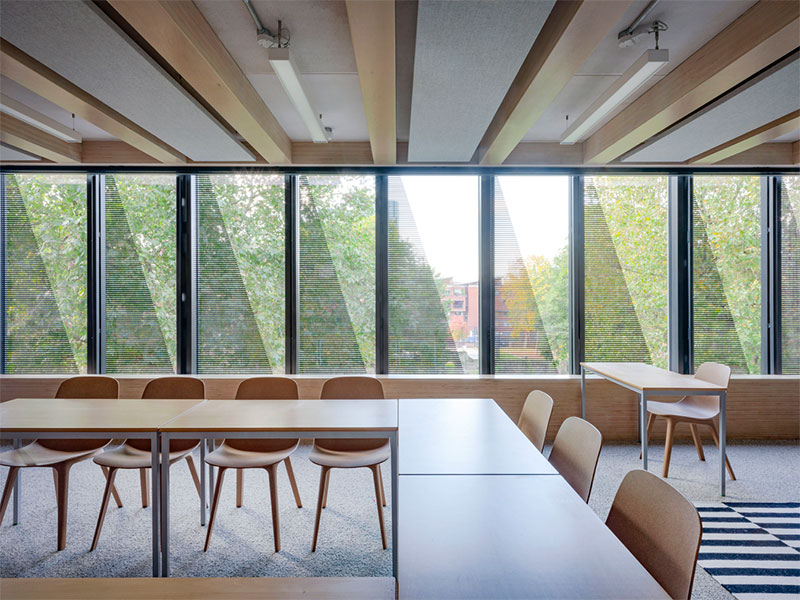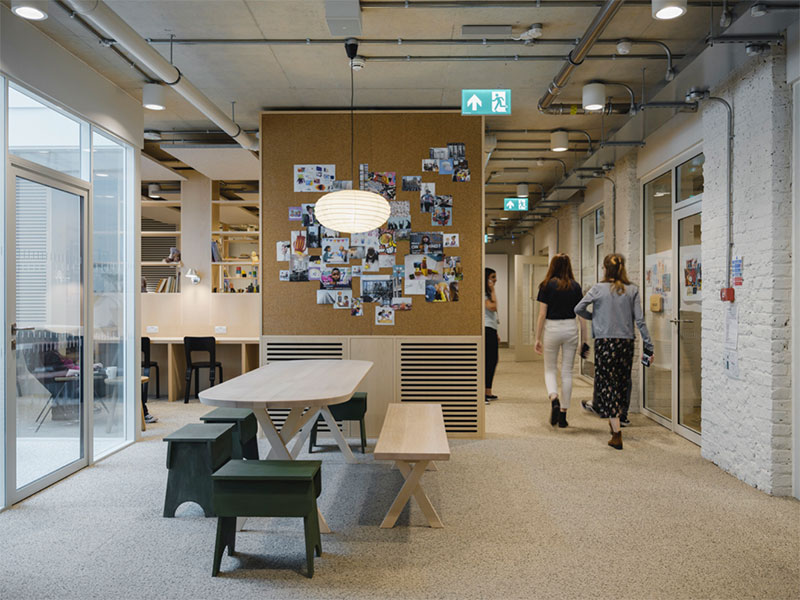The Kantor Centre of Excellence is a 3,200m2 part new build, part refurbishment project located on a restricted site near London’s King’s Cross. It is the first centre of excellence for children and young people’s mental health in England and represents an exciting new era for the Anna Freud Centre charity, bringing together the best in clinical practice, research and policy under one roof in their new headquarters.

Willmott Dixon engaged with Penoyre & Prasad’s extensive design team in coordination with supply chain partners to help produce the stunning visual effects of the façade. Penoyre & Prasad worked tirelessly each week in development with Willmott Dixon’s in-house design management team, as well as production specialists, to coordinate the interfaces between the complex façade and the hybrid structure that provides a big part of the internal aesthetic and was key to constructing the architect’s vision.
At the heart of the Centre, the Pears Family School provides support for children aged 5-14, who have been excluded from mainstream school with serious and behavioural issues related to their mental health, and their families.
With this intensity of use and the often-vulnerable state-of-mind of the young people accessing services it was critical to create spaces which reassured, soothed and inspired building users and visitors.
We worked closely with renowned designer Ilse Crawford to develop a seamless and common language flowing from architecture through interiors and visa-versa. Both practices brought-to-bear their focus on the needs, functional and psychological, of building users to drive design solutions and a visual sensibility unique to this collaboration.
The simple ideas of; juxtaposing old and new; maximising collaborative working; placing the children the charity serves at the heart of the building; not only inform the design, but we believe are legible throughout its built realisation.

Equally important was to present a public face; being welcoming to visitors and befitting of one of the world’s pre-eminent institutions in the field. To this end our diagonal organising motif subverts the orthogonality of conventional city buildings to achieve a unique appearance. Especially important given the buildings relatively diminutive scale against otherwise dominant neighbours.
Core services and activities include talking therapies for children suffering mental health issues and education for those children on the edge of exclusion from mainstream education facing similar challenges. Always with a whole-family focus on that therapy.
Much of the therapy work and outreach work of the charity focusses on the preventative and lifestyle aspects of mental health. Our design supports this through its anti-institutional, non-stigmatising aesthetic.
